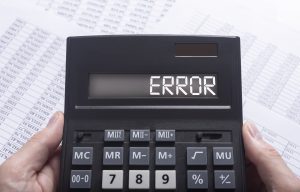The Current Expected Credit Loss (CECL) model marks a significant change in how organizations account for receivables, loans, and other financial assets. Originally implemented for financial institutions, CECL now extends its impact across various industries that hold assets subject to credit risk. This proactive model emphasizes forward-looking estimates of potential credit losses, transforming how businesses manage and recognize credit risks. Here’s a breakdown of the major changes introduced by CECL and the effect it has on businesses:
1. Shift from “Incurred Loss” to “Expected Loss”
One of the most fundamental changes under CECL is the shift from the incurred loss model to the expected loss model.
- Incurred Loss Model (Old Method): Under the previous approach, organizations recorded losses only when they were “probable” and could be reasonably estimated. This often led to delayed recognition, as companies waited for concrete evidence that a loss had occurred. For example, a company might not recognize a loss until a customer had defaulted on a loan or missed payments for a certain period.
- Expected Loss Model (New Method): CECL takes a proactive stance by requiring companies to estimate expected credit losses over the life of a loan or receivable from the moment it is originated. This change means that losses must be forecasted based on historical data, current economic conditions, and projections for future economic factors. Even if there’s no immediate indication of a loss, businesses are required to estimate potential credit risks from day one.
This shift ensures that businesses are better prepared for potential credit losses and can respond more swiftly to changing economic environments.
2. CECL Applies to a Broader Range of Financial Assets
While CECL was initially designed with financial institutions in mind, it applies to a wide range of assets beyond traditional loans. Any organization that holds financial assets subject to credit risk will need to comply with CECL. These assets include:
- Trade receivables
- Loan receivables
- Held-to-maturity debt securities
- Lease receivables
As a result, industries like retail, real estate, and manufacturing—alongside financial institutions—must now estimate and account for credit risks on their financial assets. If your business holds receivables or leases that generate credit risk over time, CECL compliance is crucial.
3. Impact on Reserves: Higher Allowances for Credit Losses
Under the new CECL model, most organizations will experience an increase in their allowance for credit losses (also known as reserves or allowance for bad debt). By recognizing losses earlier in the asset’s life, companies are likely to hold higher reserves on their balance sheets.
This increase in reserves can have short-term implications, such as reduced profits, but it offers a more realistic view of a company’s risk exposure. By building reserves earlier, businesses are in a better position to absorb potential losses and remain financially stable during economic downturns or periods of increased default risk.
4. Estimation Methods: Tailored Approaches to Credit Losses
CECL allows businesses some flexibility in determining how they estimate credit losses. Companies can choose from several methods, as long as they incorporate the following:
- Historical data
- Current conditions
- Projections of future economic conditions that are both reasonable and well-supported
Common estimation methods include:
- Historical Loss Rates: Using past performance to forecast future credit losses.
- Regression Analysis: Predicting future losses based on various factors, including macroeconomic indicators.
- Roll-Rate Method: Using historical trends in credit quality indicators, such as delinquency and risk ratings, to estimate losses
- Discounted Cash Flow (DCF) Analysis: Estimating losses by calculating the present value of future cash flows, taking potential losses into account.
Regardless of the method chosen, companies must ensure that their estimates reflect the most accurate and forward-looking information available. The result is a more nuanced and dynamic approach to accounting for credit risk.
5. Impact on Financial Statements: Greater Volatility but Enhanced Transparency
CECL may lead to increased volatility in financial reporting due to its reliance on forward-looking forecasts. As economic conditions change, so too will the estimates of expected losses. For instance, in times of economic uncertainty or downturn, businesses may need to recognize higher expected losses, impacting both their reserves and their overall financial performance.
To ensure transparency, CECL requires organizations to disclose detailed information about their credit loss estimates. This includes:
- Methodology used for estimates
- Key assumptions and inputs
- Sensitivity analysis: Understanding how changes in economic conditions or assumptions could impact the allowance for credit losses.
This transparency benefits stakeholders by offering a clearer, more comprehensive view of a company’s financial health and risk exposure.
In Summary: A Proactive Approach to Managing Credit Risk
The CECL model represents a fundamental shift in how businesses account for credit losses. By requiring earlier recognition of potential losses and applying to a broader range of financial assets, CECL encourages a more proactive approach to managing credit risk. While the transition may increase reserves and introduce more volatility into financial statements, the long-term benefit is improved risk management and financial transparency.
Organizations should take the time to review their estimation methods, ensure their reserves are sufficient, and stay informed about how changes in the economy could affect their credit loss forecasts. For businesses with significant receivables, adopting CECL is not just about compliance—it’s about building a more resilient and forward-looking financial strategy.
If your organization is navigating the complexities of CECL and needs assistance with compliance or estimation methods, don’t hesitate to reach out to LSL today!




